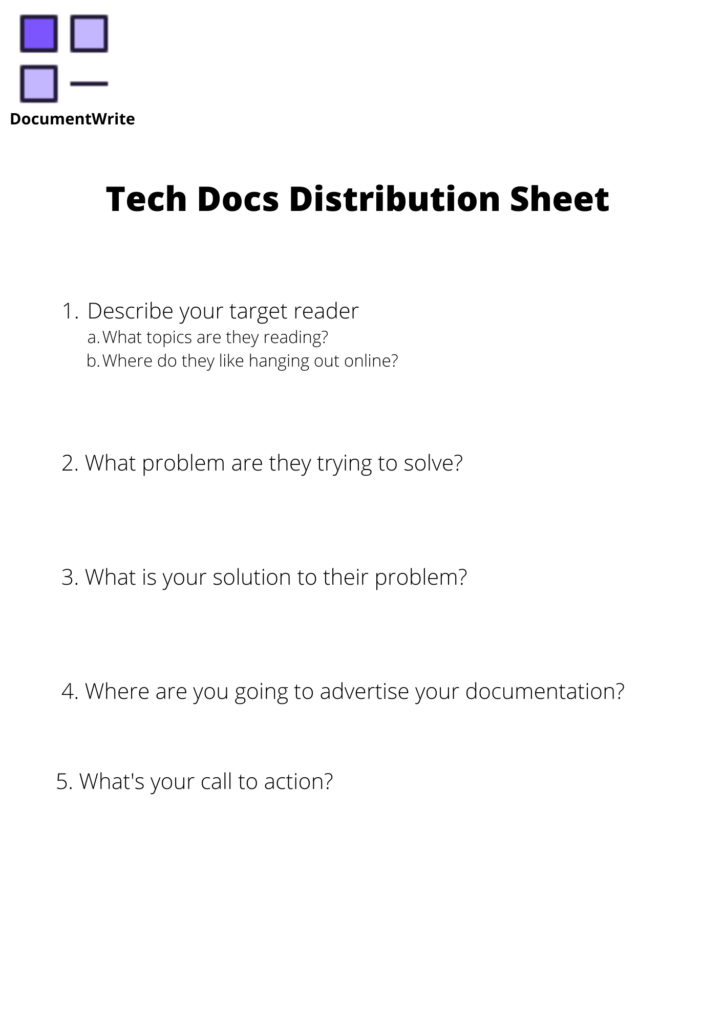You’ve spent the whole quarter lovingly writing v1 of your company’s ‘getting started guide’. You press publish and then…🦗🦗🦗. Why isn’t anyone reading your documentation?
Ignored docs are holding your company back
Technical writers get paid to write solutions and solve software problems. When you fail to reach your target readers, you’re failing to solve their problems. When you don’t optimize for increasing target readership, you’ve lost.
- Potential revenue
- Potential new users
- Potential strategic partnerships
Fortunately, crafting a robust content distribution plan will ensure that users see your documentation.
What is content distribution?
Content distribution is sharing your documentation or tutorial on social media, blogs, or podcasts. Once you finish writing, you figure out who would benefit the most from your writing and where those people are hanging out. Are you looking for folks who care about React? Check Twitter, meetup, and LinkedIn.
Content distribution is important because rarely does “the writing speaks for itself.” Writing is just like any product. You might be a fan of avocados, but that doesn’t mean you will travel to a farm to get your avocado fixed. No, someone distributes these goods to you in a place near you, preferably a supermarket.
Just like that avocado farmer, you need to go to where your fans are located!
Who is your target audience?
Everyone? Wrong answer. Documentation written for everyone appeals to no one.
Think about yourself. Are you attracted to generic material? When was the last time that content aimed at ‘everyone’ moved the needle in your life?
When writing documentation, it is important to know your reader. What are their quirks? What makes them unique? What are they trying to overcome?
To help you get started, I wrote some common personas you might be writing for as a documentarian.
The Indie Hacker

Persona:
Rhonda is a software developer at a national publication in New York City. She’s a full-stack engineer maintaining the magazine’s CMS. Rhonda returns to her studio apartment on weekdays and spends the weekends hacking on her side project. Once she makes enough money to cover her living expenses, she’ll say goodbye to her day job. Once she reaches ramen profitability, she’ll also probably need the paid API tier of your product.
Topics that she reads about:
- Building community
- Indie hacking
- Web Performance
Where you can find her online:
- Hacker News
- #techtwitter
- Hackernoon 😉
Enterprise Customer

Persona:
Li Jun is the head of data engineering at a major FAANG company. She misses being an individual contributor but loves shaping the company’s product. Currently, Li Jun would like her team to focus more on creating insights and less on cleaning data. She’s looking for a tool that will shape raw data and give her team more time to analyze and visualize the data. The data engineering department has a healthy budget, and Li Jun is currently demoing different products. Difficult doc is a non-starter for her. If she can’t get a ‘hello world’ project up and running on her machine, then she’ll pass and start reviewing the next tool.
Topics that she reads about:
- The latest development of Postgres
- Cleaning data and dimensionality reduction
- All things containers- docker, Kubernetes…
Where you’ll find her online:
- Watching Pydata videos on Youtube
- Local data science meetups
- Netflix engineering blog
VC Investor

Persona:
Briana graduated from Harvard and did the whole big investment banks thing for five years, then founded and sold a SaaS startup, and now does VC. She’s an early adopter of Clubhouse but now spends a good chunk of her time on Twitter Spaces. When she’s not writing thought pieces on LinkedIn, she travels around major cities in North America and Europe talking to decentralized tech startups.
Topics that she reads about:
- Layer 2 Ethereum solutions
- Diversity initiatives in tech and the VC world
- #Nocode’s role in helping early founders build MVPs
Where you’ll find her online:
- Reading a16z newsletter
- Listening to the ‘What Bitcoin Did’ podcast
- In @Arlanwashere mentions on Twitter
Your Turn
Before writing documentation, make sure that you are clear on who you’re writing for, where you’ll find that person and what’s your call to action.

Happy writing!

